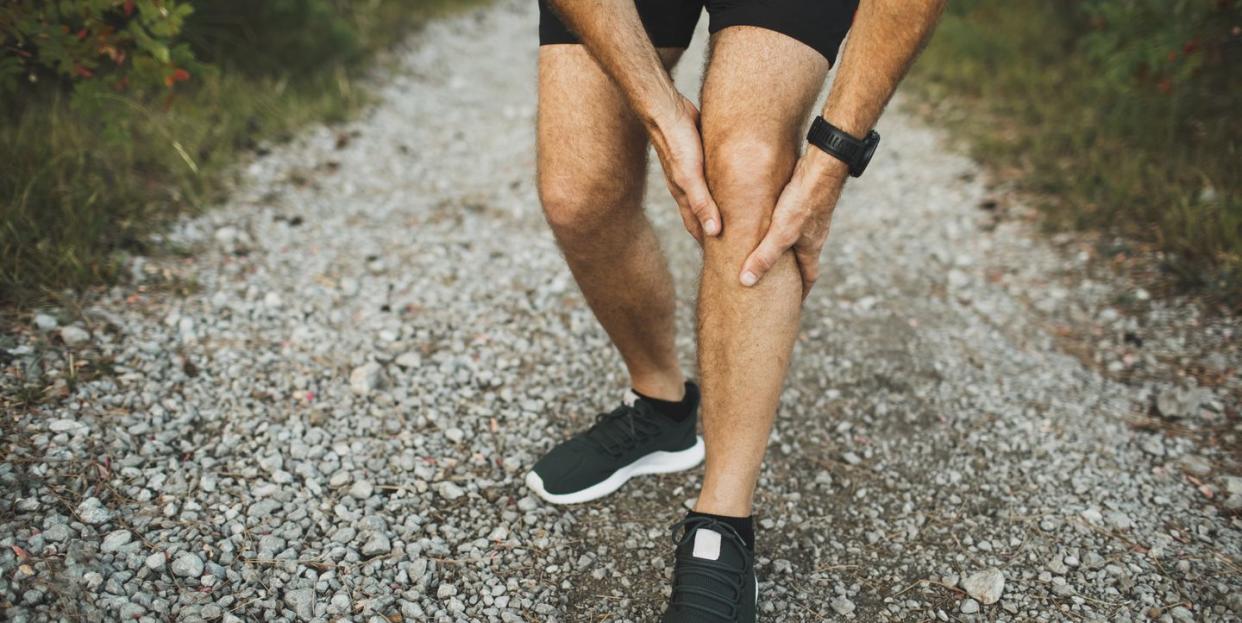How a Sports Doctor Keeps His Joints Healthy

If your joints don’t feel good, you don’t feel good. That’s because there are about 300 of these connection points in your body, and many of them depend on one another. Yes, genetics shape the strength of your cartilage (the stuff that cushions joints), but there’s still plenty you can do to stabilize, fortify, and pain-proof your joints. Here’s how 37-year-old Brett Toresdahl, M.D. does it.
Eat well
There’s a lot of talk about pro-inflammatory and anti-inflammatory foods, but I’m not yet convinced that there are foods that are universally good or bad for joint health. It’s more important to eat what keeps you at a healthy weight, because weight-related stress contributes to osteoarthritis of the hip and knee. I aim to—with variable success—control portions, minimize processed foods, and consume a variety of fruits and vegetables. When my wife and I go out to dinner, we’ll have a bunch of vegetable sides and appetizers and split a meat entree.
Run often
I regularly run two miles home from work, and it doesn’t wreck my knees. In fact, it may help them. Some studies show that running may have some positive effects for joints, if your cartilage and alignment are healthy. That said, the more old trauma there is, the harder it is for our bodies to adapt appropriately. So if something hurts, get it checked out so you can build a consistent running program the healthy way.
Exercise your joints throughout the week
Our joints are adaptable, but it’s hard for them to adapt when you work—or “stress”—them only once a week. If I want to be able to run six or eight miles on Saturday or Sunday, I make sure I run at least a few times a week so I keep my joints exposed to that kind of stress. Less frequent workouts are even harder for joints; joint inactivity can cause them to lose the support and stability needed to do the work you want them to do. Then you can get into this bad cycle in which pain keeps you inactive, inactivity keeps you weak, and weakness keeps the joint pain going.

Do yoga
I do about 15 to 20 minutes of yoga for my joints—runner’s flow yoga, wind-down yoga flow, or yoga core on the Nike Training Club app—a few times a week. It improves the motion of the joints partly by keeping tendons, which support the joints and muscles, from getting tight and stiff. If your tendons aren't elastic, you can start to develop bad habits in how a joint is used, which can lay the groundwork for pain and other issues down the line.
Consider joint pain injections
Injections for joint pain have a lot of hype around them. Cortisone, hyaluronic acid, and PRP (platelet-rich plasma) injections can help manage certain joint pains, but they have pros and cons. Even though stem-cell injections are marketed as a new hope for joint cartilage repair, if I had joint issues, I wouldn’t get these yet. There’s no evidence to show they repair or prevent worn-down cartilage. Nothing at this point—injection, medication, or supplement—can regrow lost joint cartilage, although the conversation may change in five or ten years.
Brett Toresdahl, M.D., an assistant attending physician at New York City’s Hospital for Special Surgery, is the team physician for US Biathlon and served as a physician at the Olympics in 2016 and 2018.
This story originally appeared in the October 2021 issue of Men's Health.
You Might Also Like

